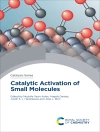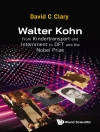Theoretical and Computational Chemistry research has made unparalleled advancements in understanding every expanding area of science and technology. This volume presents the state-of-the-art research and progress made by eminent researchers in the area of theoretical computational chemistry and physics. The title mirrors the name of the annual international conference “Conference on Current Trends on Computational Chemistry” (CCTCC) which has become a popular discussion ground for eminent Theoretical and Computational Chemists and has been honored by the presence of several Nobel Laureates. Practical Aspects of Computational Chemistry III is aimed at theoretical and computational chemists, physical chemists, material scientists and those who are eager to apply computational chemistry methods to problems of chemical and physical importance. The book is a valuable resource for undergraduate, graduate and Ph D students as well as established researchers.
Зміст
The Scanning Tunneling Microscopy of Adsorbed Molecules on Semiconductors: Some Theoretical Answers to the Experimental Observations – Ph. Sonnet and D. Riedel.- Models of the Interfaces in Superhard Ti N-Based Heterostructures and Nanocomposites from First-Principles – Volodymyr Ivashchenko, Stan Veprek, Patrice Turchi, Jerzy Leszczynski.- Investigating Complex Surface Phenomena using Density Functional Theory – Raghani Pushpa.- Growth Mechanism, Energetics and CO Affinities of Vanadium Doped Gold Clusters, Aun V with n = 1 – 20 – Pham Vu Nhat, Jerzy Leszczynski, and Minh Tho Nguyen.- Structure and Energetics of Polyhedral Oligomeric Silsesquioxane (T8 , T10, T12–POSS) Cages with Atomic and Ionic Lithium Species – Habib U. Rehman and Steven R. Gwaltney.- Intrinsic Magnetism in Single-Walled Carbon Nanotubes of Finite Length – Frank Hagelberg, Jianhua Wu, Anahita Ayasoufi, Jerzy Leszczynski.- Modelability Criteria: Statistical Characteristics Estimating Feasibility to Build Predictive QSAR Models for a Dataset – Alexander Golbraikh, Denis Fourches, Alexander Sedykh, Eugene Muratov, Inta Liepina, Alexander Tropsha.- A Combination of the Sequential QM/MM and the Free Energy Gradient Methodologies with Applications – H.C. Georg, T. S. Fernandes, S. Canuto, N.Takenaka, Y.Kitamura, and M. Nagaoka.- A Physics Based Hydrologic Modeling Approach to Simulate Non-point Source Pollution for the Purposes of Calculating TMDLs and Designing Abatement Measures – Nawa Raj Pradhan, Charles W. Downer, Billy E. Johnson.- Advances in In Silico Research on Nerve Agents – Devashis Majumdar, Szczepan Roszak, Jing Wang, Tandabany C. Dinadayalane, Bakhtiyor Rasulev, Henry Pinto and Jerzy Leszczynski.- Valence Anions of DNA-Related Systems in the Gas Phase. Computational and Anion Photoelectron spectroscopy Studies – Piotr Storoniak, Haopeng Wang, Yeon Jae Ko, Xiang Li, Sarah T. Stokes, Soren Eustis, Kit H. Bowen, and Janusz Rak.- Hints from Computational Chemistry: Mechanisms of Transformations of Simple Species into Purine and Adenine by Feasible Abiotic Processes – Jing Wang, Jiande Gu and Jerzy Leszczynski.












